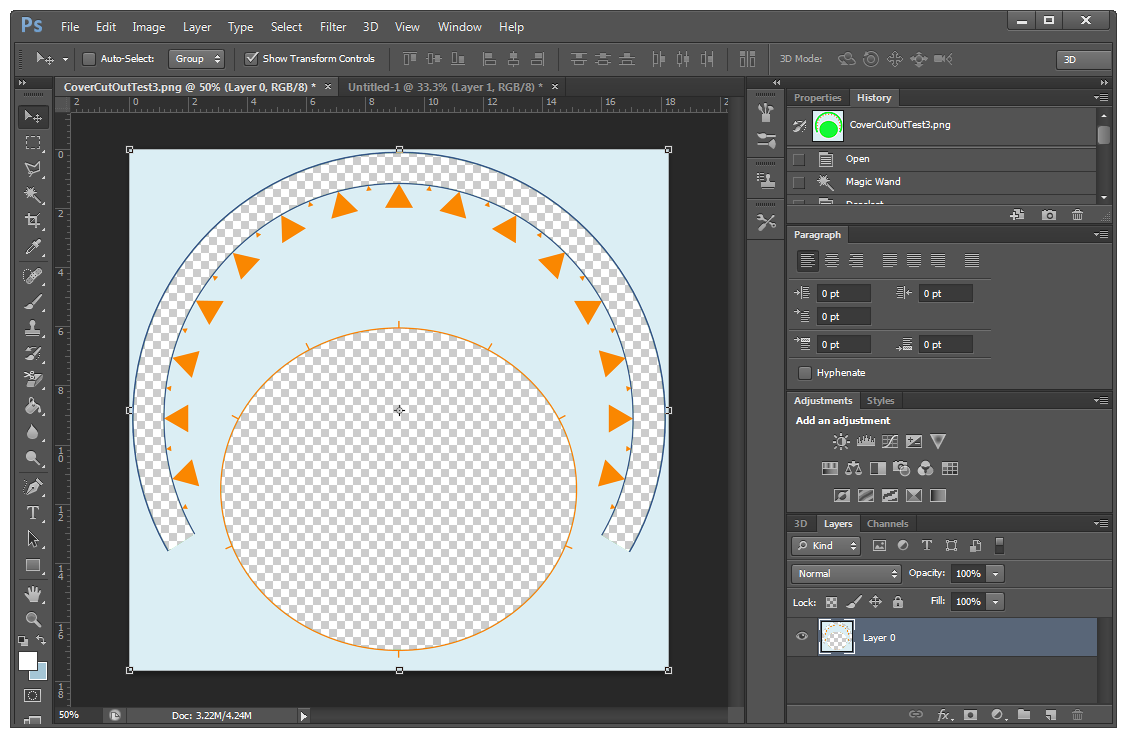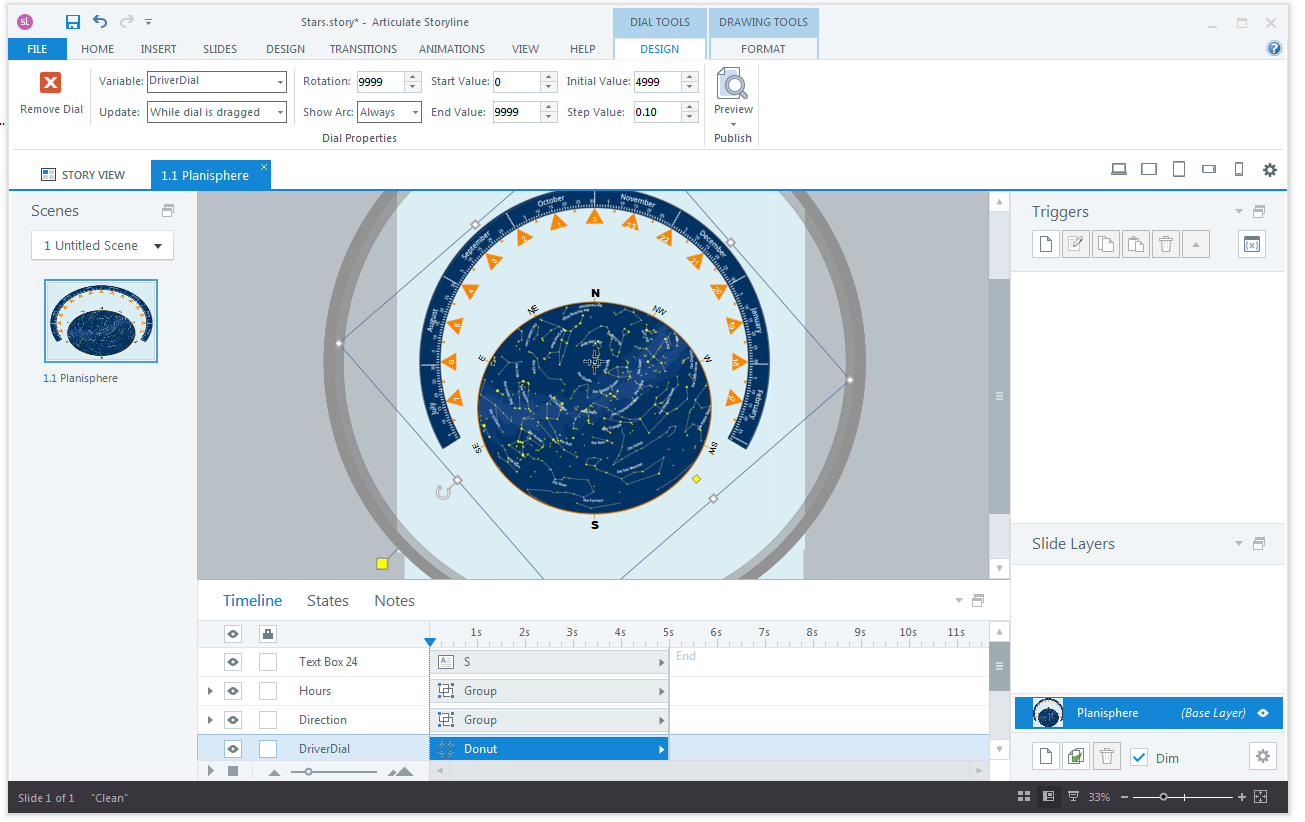Storyline 360 recently added a built-in function to provide closed captions for video and audio narration. In previous versions of Storyline, you had to add layers and/or scrolling panels to display CC in a slide…those days are finally over. The process of creating Closed Captions is pretty straightforward. Here is a lengthy tutorial that provides a lot of information about implementing CC.
Closed Captions require a file (a separate file for each video/audio clip) that provides a transcript of the narration, as well as timing info.
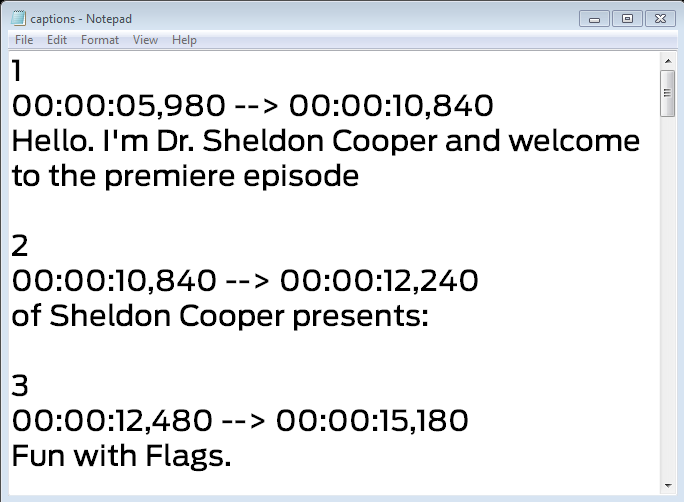
This file can then be added to a video/audio in SL360. There is also a new True/False variable ‘Player.DisplayCaptions’ that can be used in triggers to turn CC on or off. This variable comes in handy when using custom navigation elements, rather than the built-in player controls.
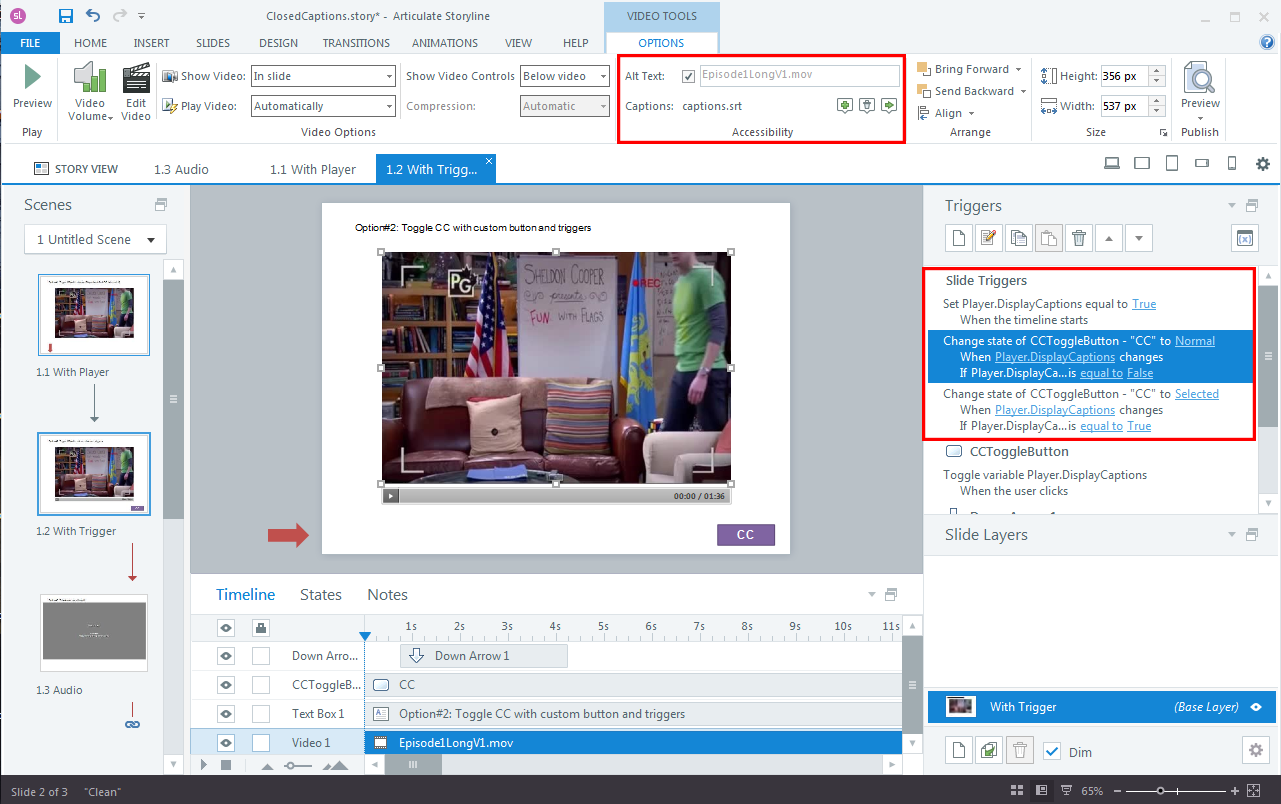
The Player Properties dialog provides an option to select the CC font, but there is no way to control the placement or background color of the CC box.
Once published, Closed Caption can either be toggled withe built-in button on the player bar or with a custom button.
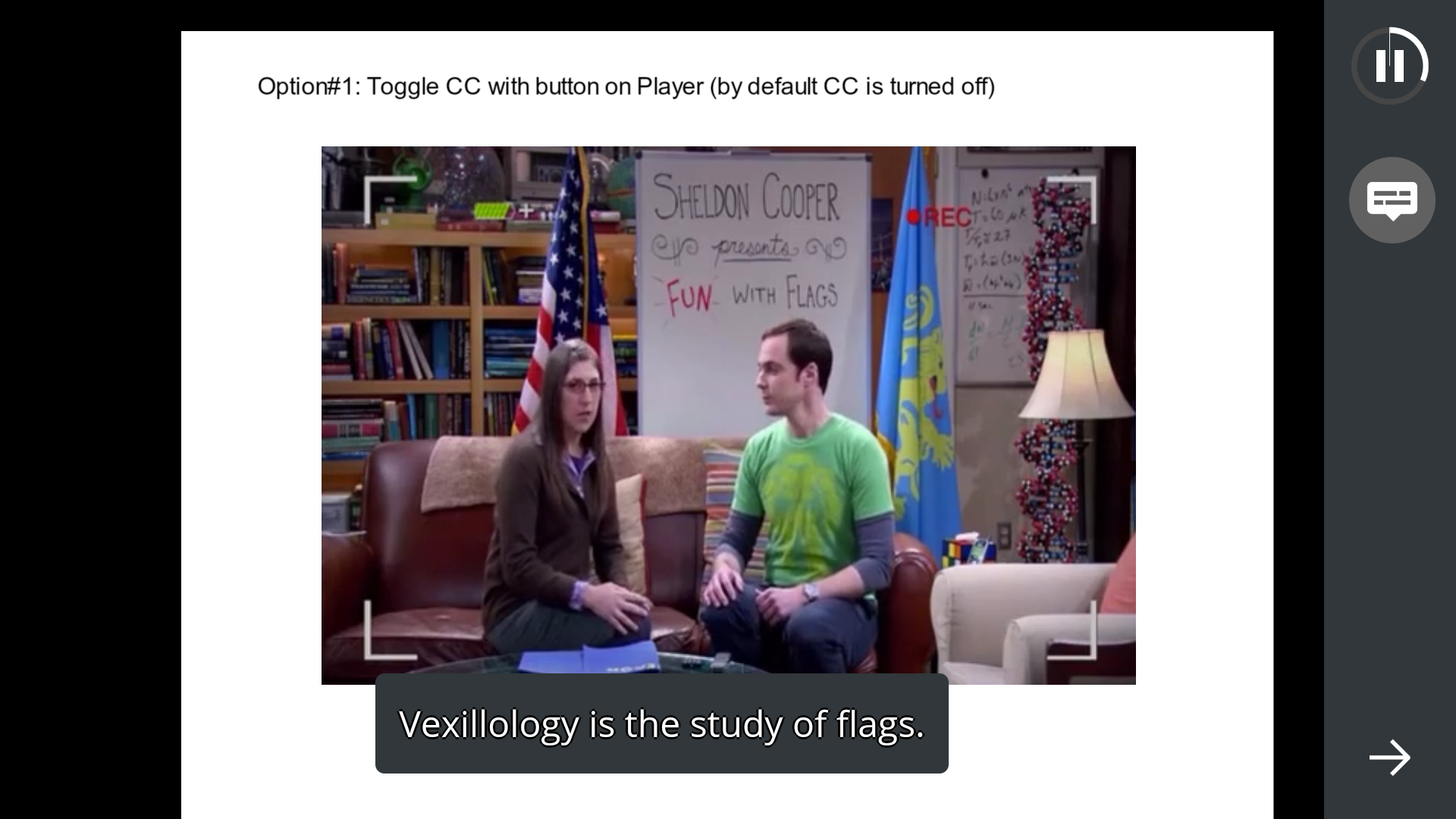
Here is a quick test file that shows the options to control CC.

